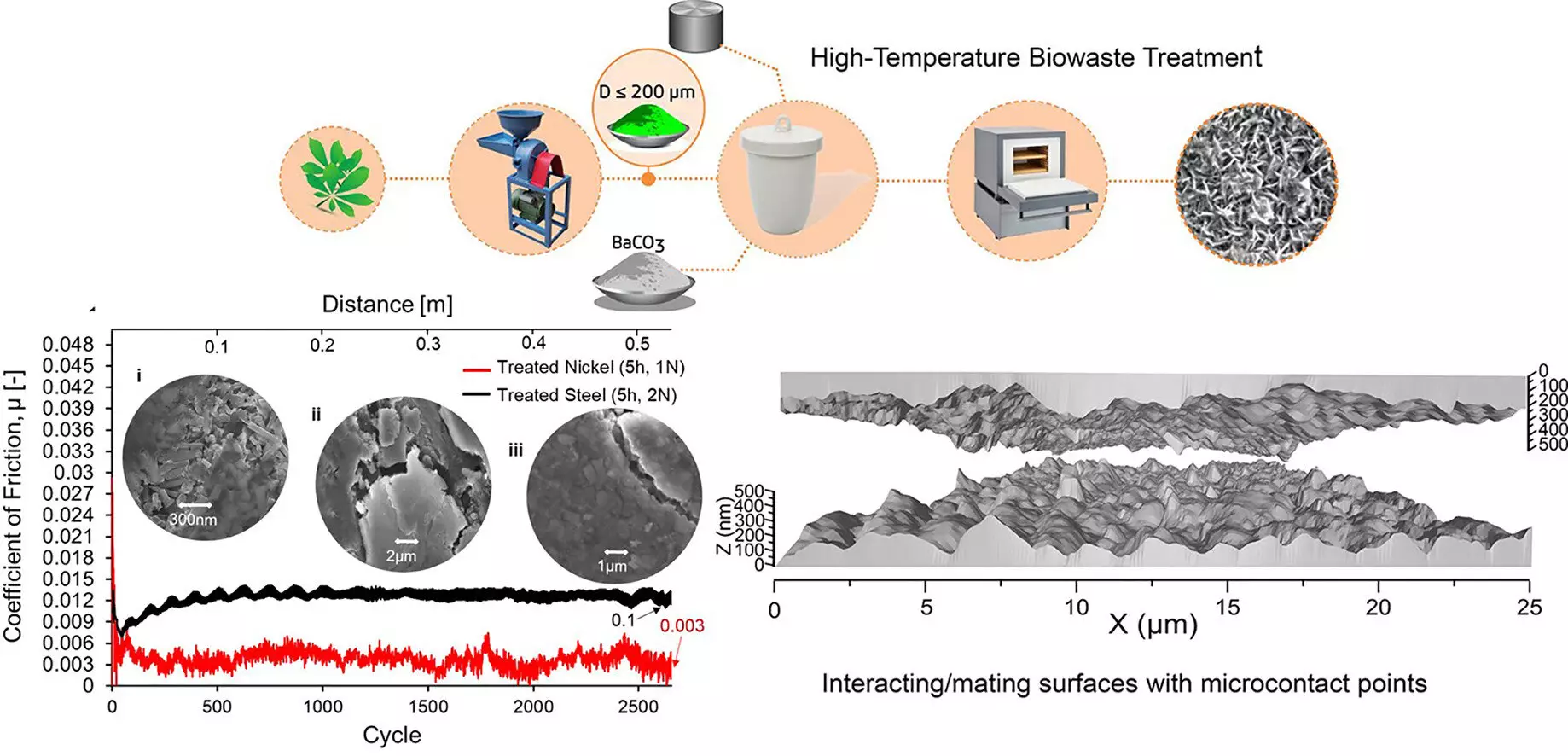Friction is a force that affects almost every industry, from automotive to manufacturing to electronic devices. The president of SUNY Polytechnic Institute, Dr. Winston “Wole” Soboyejo, and postdoctoral researcher Dr. Tabiri Kwayie Asumadu have recently published a groundbreaking paper titled, “Robust Macroscale Superlubricity on Carbon-Coated Metallic Surfaces,” in the journal Applied Materials Today. This paper introduces a revolutionary approach to reducing friction on metallic surfaces that could have a profound impact on various sectors.
The study reveals that superlubricity, a state with virtually no friction that was previously only achievable at the nanoscale, can now be maintained at macroscale for extended periods of time under regular atmospheric conditions. This achievement is made possible by utilizing sustainably produced carbon coatings derived from biowaste. The implications of these findings are far-reaching and could revolutionize industries such as automotive, manufacturing, and electronics.
In the automotive sector, where over 30% of fuel in passenger vehicles is used to overcome friction, these novel coatings could significantly enhance fuel efficiency. For manufacturing and industrial machinery, the coatings could reduce wear and tear, leading to substantial cost savings and decreasing the percentage of countries’ GDP spent on friction-related equipment issues. In electronic devices, where friction at a small scale can pose significant challenges, these coatings could offer solutions for alleviating such issues.
The experimental and computational results discussed in the paper focus on ultralow friction of carbon-coated metallic depositions on substrates of various materials such as structural steels, Ti, and Ni alloys. The study demonstrates that macroscale superlubricity can be achieved and sustained over numerous cycles by using structurally misoriented carbon coatings on metallic surfaces. Carbon nanocrystals with graphene footprints were deposited on the metallic surfaces through a unique high-temperature biowaste treatment process, leading to a coefficient of friction close to zero.
The research provides insights into the mechanisms of coating/substrate interactions that contribute to macroscale superlubricity. The implications of these findings extend to the development of robust and cost-effective superlubricious carbon coatings on metallic substrates. The use of biowaste as a carbon source within the concept of a circular economy holds promise for reducing the global carbon footprint. The collaborative effort involving scientists from Africa and the Northeastern United States illustrates the global significance of this research.
Overall, the research conducted by Dr. Soboyejo, Dr. Asumadu, and their colleagues represents a significant step forward in the field of friction reduction. By exploring innovative approaches to achieving superlubricity on a macroscale, this study opens up new possibilities for enhancing efficiency, reducing costs, and creating a more sustainable industrial future.


Leave a Reply